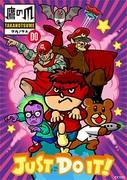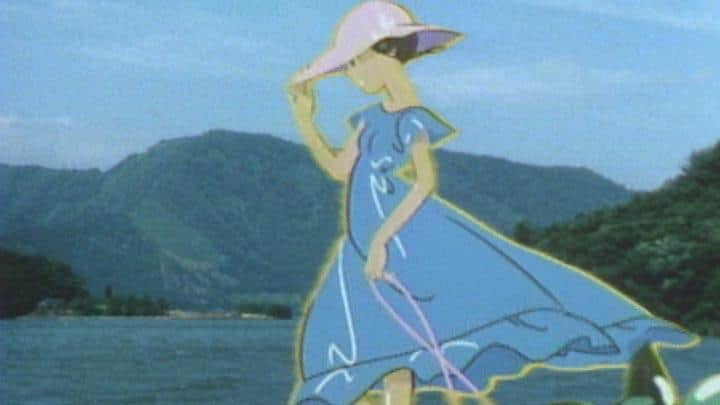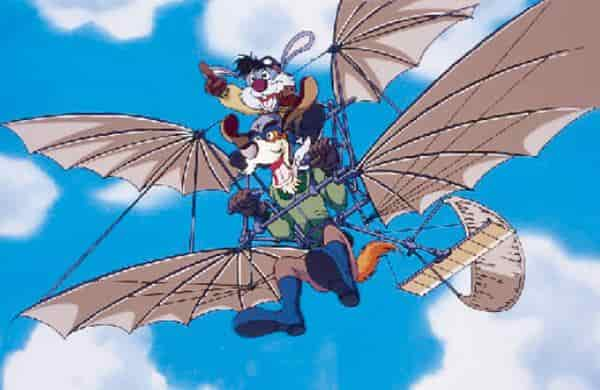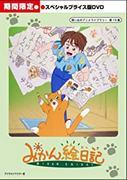Swim Swim Animal Swimming Meet: Fun and moving review

"Swim, Swim, Animal Swimming Meet": The appeal of animation from the early Showa period and its historical significance■Overview of the work"Swim, Swim, Animals' Swimming Meet" (Oyoge Oyogedoubutsu no Suieitaikai) is an animated work that was released on January 1, 1939. This work is an original anime, and the media it was released in is classified as "other". Although it is a short one-episode work, the content is very unique and fully brings out the charm of animation from the early Showa period. ■ Story■ Story At a swimming contest for animals, the vain Monkey cannot admit that he cannot swim and enters as a contestant by diving into the pool, but sinks. For some reason, seaweed grows at the bottom of the pool like the bottom of the ocean, there is coral, and a kappa lives there. The Monkey fights with the kappa, taking the plate from its head, and instead of returning the plate, the Monkey puts it on its back and makes it look like he is swimming, and takes first place. ■ Background and historical significance of the work"Swim, Swim, Animals' Swimming Meet" was released in 1939, and it is important to understand the historical context in which it was made. This was just before the Second World War, and while militarism was on the rise in Japan, new forms of cultural expression were being sought. Animation was one of these, and short animated films in particular were widely accepted as entertainment for the masses. This work was also a challenge in terms of how to tell a story within the technical limitations of the time. Animation was done by hand, which meant there were limitations to the expression of color and movement, but this was turned to advantage in some humorous scenes. In particular, the setting of an ocean-like world spreading out at the bottom of the pool not only provides a visual surprise, but also has the effect of stimulating the audience's imagination. ■Characters and their appealThe main character of this work, Monkey-kun, is an attractive character who is vain and takes part in a swimming competition despite not being able to swim. This character can be said to be satirizing the tendency in Japanese society at the time to value "appearance" and "respectability." Monkey-kun's actions also symbolize the attitude of taking on challenges without fear of failure, and can be interpreted as a message of encouragement to children. Also of note is the inclusion of the kappa, a legendary Japanese creature deeply rooted in Japanese folklore, and the episode in which the plate is stolen from the kappa's head is an example of how a traditional tale can be reinterpreted in the new medium of animation. The interaction with the kappa is humorous, yet also serves to highlight Saru-kun's wit and wisdom. ■ Animation techniques and expressions"Swim, Swim, Animals' Swimming Meet" is a work that pursues the maximum expression within the technical constraints of the time. In particular, the depiction of the underwater world that spreads out at the bottom of the pool creates a visual impact with a clever combination of color and movement. The depiction of the seaweed and coral gives a sense of warmth and detail that can only be achieved by hand-drawn animation. The scene where Saru-kun jumps into the pool and the fight scene with the kappa are a perfect blend of smooth movement and comical direction. These scenes are proof of how much the technicians of the time were exploring the possibilities of animation. ■ Evaluation and influence of the work"Swim, Swim, Animals' Swimming Meet" was a highly acclaimed short animated film at the time. In particular, its humorous story and clever animation techniques left a strong impression on audiences. This work can also be said to be a pioneer in incorporating traditional Japanese storytelling elements into animation, and it had a major influence on subsequent animation works. This work also has educational value. Through the actions of Monkey-kun, we can teach children the importance of taking on challenges without fear of failure, and the significance of using wisdom and resourcefulness. These messages are still relevant today, demonstrating the universal value of the work. ■ Recommendations and how to watch"Swim, Swim, Animals' Swimming Meet" is a must-see for anyone wanting to understand the charm and historical significance of animation from the early Showa period. It is especially recommended for those interested in the history of animation and traditional Japanese stories. It is also enjoyable for children, so it is recommended for viewing with the whole family. This work is now available to watch on DVD and online streaming services. In particular, museums and libraries that specialize in the history of Japanese animation films may have it in their collections as a valuable film, so if you are interested, be sure to visit them. ■ Related works and comparisonsOther short animated films produced around the same time as "Swim, Swim, Animals' Swimming Meet" include "Momotaro's Sea Eagle" (1943) and "The Cloud and the Tulip" (1943). These films also challenged themselves to tell stories within the technical limitations of the time, and contain humorous elements and educational messages. "Momotaro's Sea Eagle" is a work set against the backdrop of war and contains a nationalistic message. On the other hand, "The Spider and the Tulip" is a work that depicts the beauty of coexistence with nature and deals with a more peaceful theme. By comparing it with these works, we can gain a deeper understanding of the uniqueness and significance of "Swim, Swim, Animals' Swimming Meet." ■Detailed information about the work
Conclusion"Swim, Swim, Animals' Swimming Meet" is a work that embodies the charm and historical significance of animation from the early Showa period. Its humorous story and ingenious animation techniques leave a strong impression on the audience and also have educational value. Through this work, you can feel the extent to which the technicians of the time were pursuing the possibilities of animation. It should also be appreciated for being a pioneer in incorporating traditional Japanese storytelling elements, and for having had a major influence on subsequent animation works. Please watch this work and experience its charm and significance. |
>>: Pyon-Taro's Military Service: A thorough evaluation of the moving story and character depth
Recommend
Obetomo Gakuen Season 1 Review: Exploring the fascinating characters and depth of the story
The appeal and evaluation of the first season of ...
Snow White live-action movie trailer and special episode: The evil queen harms the princess
Recently, Disney released a new trailer and speci...
Esper Mami: My Angel Mami's Appeal and Evaluation
Esper Mami My Angel Mami-chan #3 - A touching sto...
New IMAX poster of "The Invisible Man" revealed, to be released in North America on March 13
On February 7, the IMAX poster of the thriller &q...
A Story of a Young Couple: Koiko's Everyday Life 2 - A thorough review of the new chapter's emotion and growth
A Young Couple's Story: Koiko's Everyday ...
Burning! Brother - The appeal and evaluation of hot-blooded anime
Moeru! Oniisan - Moeru! Oniisan - Reviews and det...
She-Hulk star reveals Marvel isn't keen on season 2
Marvel's spin-off series "She-Hulk"...
The appeal and reputation of "Ijiwaru Baasan": Humor from the good old days brought to the present
"Mean Granny": A story of humor and lov...
In the vote for the most handsome JUMP protagonist name in the eyes of Japanese netizens, JOJO ranked second
There are countless characters in many classic JU...
Yowamushi Pedal GLORY LINE Season 4: A thorough review of the challenge to the top and the thrilling races
Yowamushi Pedal GLORY LINE overview "Yowamus...
The movie "Jiang Ziya" released a poster of the four-faced version with dense and detailed hair
The Chinese animated film "Jiang Ziya" ...
The appeal and reputation of Space Pirate Captain Harlock: A deep look at the TV series
Space Pirate Captain Harlock: The Eternal Rebel a...
"Issun-boshi" review: What is the little hero's big adventure?
Issunboshi - Issunboshi ■ Public Media theater ■ ...
The appeal and reviews of "Tribe Cool Cool": An anime experience not to be missed
Tribe Kurukuru: A tale of future adventure and fr...
"Ant-Man 3" new trailer released, the villain Kang is coming with great force
Recently, a new trailer for Ant-Man 3 was release...









